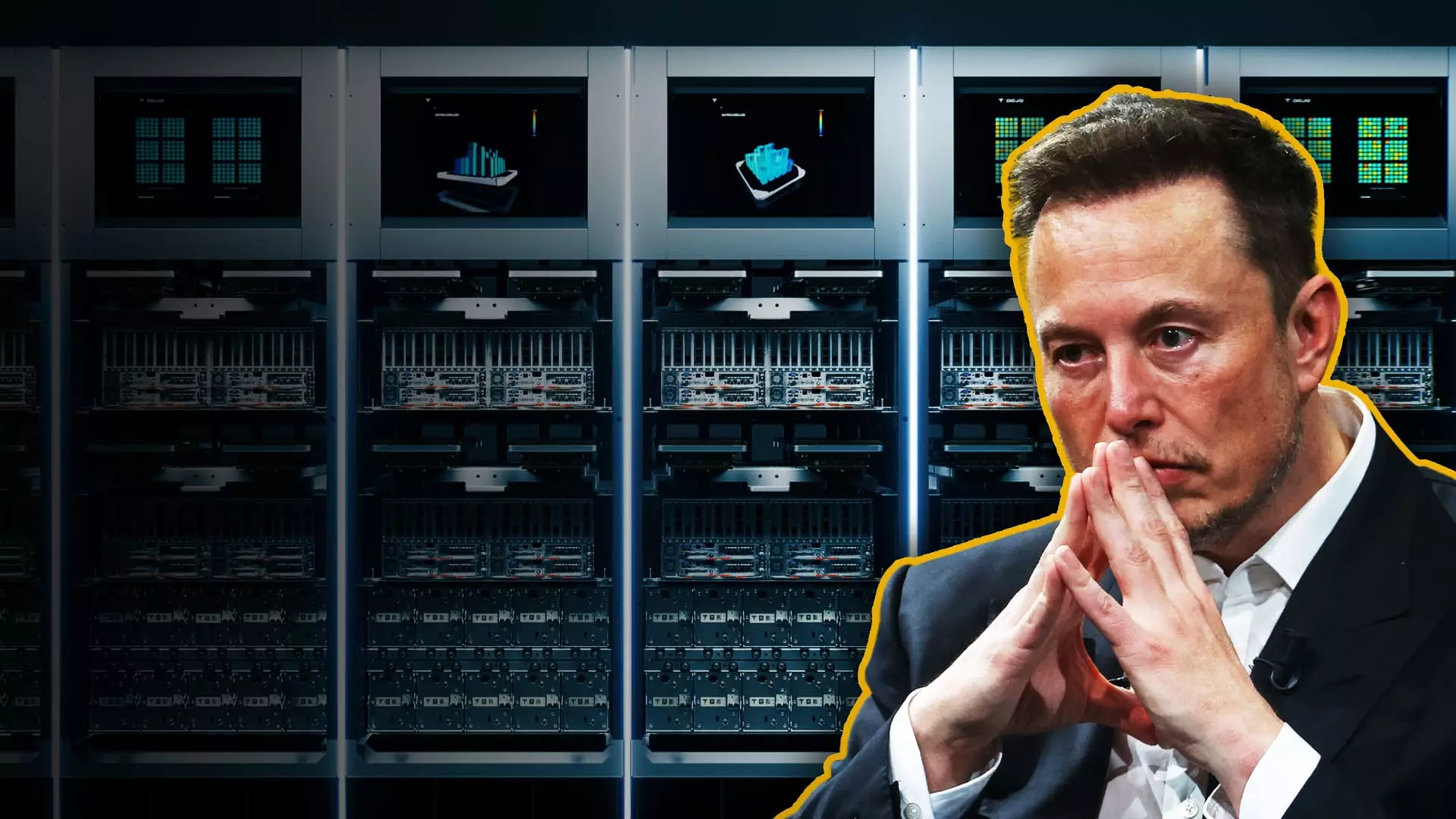Elon Musk, a towering figure in the tech industry, is undertaking a monumental mission to redefine the landscape of artificial intelligence (AI) through the development of state-of-the-art supercomputers. With this goal, Musk aims to enhance his business ventures, particularly Tesla and his recently established AI company, xAI. By leveraging the power of AI, Musk envisions a future where technology significantly amplifies the capabilities of his existing products, shaping them into robust AI-first systems.
In a significant shift in perspective, Musk articulated in January on the platform X that Tesla should be conceptualized as an AI and robotics enterprise rather than merely an automobile manufacturer. This rebranding aligns with the company’s investment in advanced computing infrastructure, specifically its custom-made supercomputer, Dojo. With a projected budget of $500 million allocated for construction in Buffalo, New York, Dojo is pivotal to Tesla’s transformation into an AI-centric organization.
Notably, Tesla is simultaneously developing another supercomputer cluster, called Cortex, at its Austin, Texas headquarters. Dojo’s role is crucial; it processes and trains AI models using extensive video and data obtained from Tesla vehicles. This innovative approach aims to enhance Tesla’s driver assistance technologies, notably the Autopilot and Full Self-Driving (FSD) systems, which promise features such as automatic lane changing, parking, and traffic sign recognition.
One of the critical advantages Tesla holds lies in the vast amount of real-world data generated by its fleet of over 5 million vehicles, each equipped with around eight cameras. As these vehicles accumulate miles—averaging around 10,000 annually—they stream valuable video footage back to Tesla, providing a rich dataset for training AI models. According to Steven Dickens, Chief Technology Advisor at the Futurum Group, this extensive training data positions Tesla strategically in the pursuit of full autonomy, an ambition that could significantly impact its market valuation.
Despite the exciting prospects, it is vital to recognize that neither Autopilot nor FSD offers complete autonomy; active driver supervision remains necessary. Tesla’s marketing strategies have faced scrutiny, with accusations of misleading claims regarding these systems’ capabilities. As competitors like Waymo, GM’s Cruise, and Amazon’s Zoox make strides in fully autonomous technology, Tesla bears the burden of catching up, and achieving this goal is crucial for maintaining investor confidence.
Tesla’s ambitions for full autonomy are inextricably linked to the success of its supercomputing initiatives. Musk has emphasized the transformative potential of Dojo, which he claims has been operational for various tasks since 2023. Tesla’s aspirations of launching robotaxis hinge upon advancements in its autonomous driving software, with an eagerly anticipated event originally set for August now rescheduled for early October.
Beyond automotive applications, Tesla’s supercomputers are also set to play a vital role in training its humanoid robot, Optimus, which the company plans to deploy in its manufacturing operations starting next year. Investments in AI continue to rise, with predictions suggesting that Musk’s companies will spend upwards of $10 billion in AI development this year alone.
In addition to Tesla, Musk’s foray into AI extends into his new venture, xAI, launched in 2023 with the mission of creating large language models and AI products. This initiative, which includes the development of the chatbot Grok, aims to provide alternatives to existing offerings from tech giants like OpenAI, Google, and Microsoft. Having departed from OpenAI in 2018, Musk has not shied away from vocal criticisms of the organization, underscoring his belief in an AI future governed by different principles.
As part of xAI’s expansion, a supercomputer named Colossus is being constructed in Memphis, Tennessee, with a portion of its capabilities reportedly operational since early September. This robust infrastructure is expected to facilitate the training of Grok, marking xAI’s serious entry into the competitive AI landscape.
Elon Musk’s endeavors in supercomputing and AI epitomize a transformative vision that seeks to mesh advanced technology with real-world applications. The road ahead is fraught with challenges, as Musk’s ambitions to elevate Tesla and xAI will require navigating intense competition and regulatory scrutiny. Yet, his unyielding commitment to innovation keeps Tesla at the forefront, with the potential to revolutionize both the automotive industry and the wider realm of artificial intelligence. The stakes are high, and the race for AI supremacy is undoubtedly on.


Leave a Reply